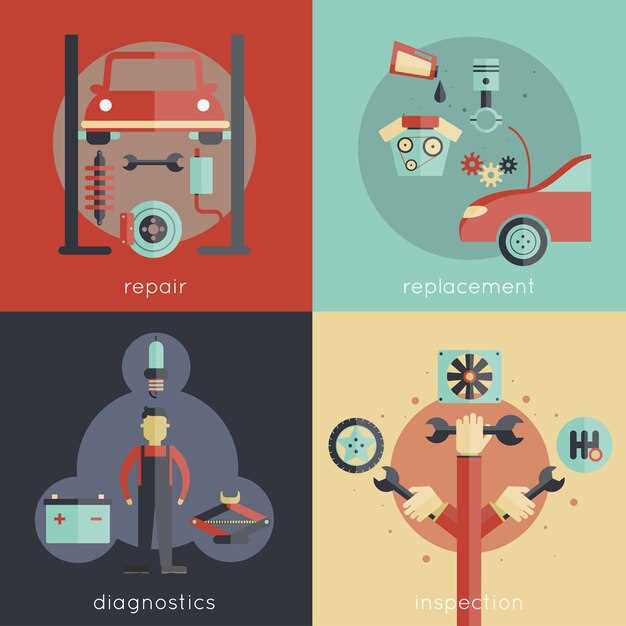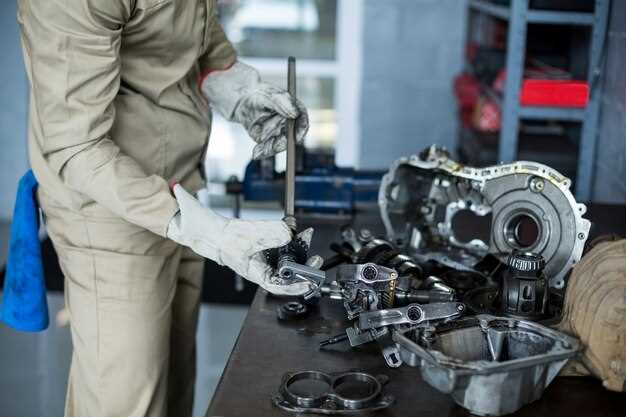
For BMW owners, the manual transmission is not just a means of controlling speed and power; it embodies the spirit of driving enjoyment that the brand is known for. However, like any mechanical system, manual transmissions can experience issues that may require attention. Understanding how to identify and address common problems can help maintain the performance and longevity of your vehicle.
In this article, we will explore essential tips for troubleshooting and repairing manual transmissions in BMW models. Whether you are experiencing difficulty shifting gears, unusual noises, or fluid leaks, knowing the specific symptoms and corresponding solutions can save you time and money. Moreover, these insights will empower you to make informed decisions about when professional help is necessary.
From routine maintenance practices to more complex repair procedures, our guide is tailored specifically for BMW enthusiasts who wish to take control of their vehicle’s performance. With the right knowledge and tools, you can ensure your manual transmission operates smoothly, allowing you to fully enjoy the exhilarating driving experience that your BMW was designed to deliver.
Identifying Common Manual Transmission Issues in BMWs

Manual transmissions in BMWs offer a thrilling driving experience, but they may encounter specific issues over time. Recognizing the signs of these problems early can prevent more extensive damage and costly repairs.
One common issue is difficulty shifting gears. This can be attributed to several factors, such as low transmission fluid levels, worn clutch components, or issues with the shift linkage. Owners should check fluid levels regularly and consider replacing the clutch if it frequently slips or feels spongy.
Another prevalent symptom is unusual noises, like grinding or whining sounds when engaging gears. These noises may indicate worn bearings, damaged gears, or insufficient lubrication. If noises occur when the clutch pedal is pressed, it may suggest that the throw-out bearing is failing.
Shifting delays can also signal problems. If there is a noticeable lag when shifting from one gear to another, it could mean the clutch is not fully disengaging. This issue could result from a faulty master or slave cylinder, requiring inspection or replacement.
Additionally, leaking fluid is a critical sign of transmission issues. A leak might stem from seals or gaskets, and it is essential to address it promptly to avoid low fluid levels, which can lead to serious transmission damage.
Lastly, a burning smell can be indicative of overheating transmission fluid. This situation often arises from excessive friction, possibly due to a failing clutch or misaligned components. Owners should not ignore this warning and should seek immediate assistance.
By being vigilant about these common manual transmission issues, BMW owners can ensure their vehicles remain in optimal condition and continue to deliver an engaging driving experience.
Step-by-Step Guide to Adjusting Clutch Pedal Free Play
Adjusting the clutch pedal free play is crucial for ensuring smooth gear changes and overall vehicle performance. Here’s a straightforward guide to help BMW owners make this adjustment effectively.
Tools Required: Adjustable wrench, ruler or measuring tape, and socket set.
Step 1: Prepare the Vehicle
Ensure the vehicle is on a flat surface and the engine is off. Engage the parking brake for safety and remove the key from the ignition.
Step 2: Locate the Clutch Pedal
Sit in the driver’s seat and locate the clutch pedal on the left side. Identify the adjustment point which is usually near the top of the pedal or the clutch master cylinder.
Step 3: Measure Current Free Play
Using a ruler or measuring tape, measure the distance the pedal travels before it engages the clutch. Typically, a free play of 0.5 to 1 inch is ideal, but refer to your owner’s manual for specific specifications.
Step 4: Adjust the Clutch Pedal
Locate the adjustment nut on the clutch linkage. Using the adjustable wrench, turn the nut clockwise to reduce free play or counterclockwise to increase it. Make small adjustments and re-measure the free play after each turn.
Step 5: Test the Clutch Pedal
After adjusting, press the clutch pedal several times to ensure it feels comfortable and responsive. The pedal should not feel excessively loose or too tight. When satisfied, proceed to check for any signs of resistance or unusual noises.
Step 6: Final Check and Clean-Up
Once adjustments are complete, double-check the free play measurement one last time. If everything is in order, neatly store your tools and ensure that no debris is left in the driver’s compartment.
Regularly checking and adjusting the clutch pedal free play helps prolong the lifespan of your transmission system and ensures safe driving. If you experience persistent issues, consider consulting a professional mechanic for a thorough inspection.
Replacing Transmission Fluid: Best Practices for BMW Manual Transmissions

Regular maintenance of your BMW’s manual transmission includes replacing the transmission fluid to ensure optimal performance and longevity. Follow these best practices for a successful fluid change.
1. Choose the Right Fluid: BMW manual transmissions require specific fluid types, often referred to as BMW MTF (Manual Transmission Fluid). Consult your owner’s manual or a qualified mechanic to ensure you use the correct fluid to avoid compromising transmission performance.
2. Gather Necessary Tools: Before starting, collect all essential tools: a socket wrench, funnel, and a clean drain pan. This preparation makes the process smoother and more efficient.
3. Warm Up the Vehicle: Operating the vehicle for a short period before changing the fluid helps to thin the oil, allowing for easier drainage. Avoid overheating; a simple warm-up is sufficient.
4. Elevate the Car Safely: Use jack stands or ramps to elevate the vehicle, ensuring it is stable and secure. Never rely solely on a jack as this can lead to accidents.
5. Drain the Old Fluid: Locate the transmission drain plug, typically found at the bottom of the transmission. Remove the plug carefully, allowing the old fluid to completely drain into the pan. This may take several minutes.
6. Inspect the Drain Plug: While the old fluid is draining, check the drain plug for metal shavings or debris. This can indicate wear or damage within the transmission and should be addressed promptly.
7. Replace the Drain Plug: Once the fluid has drained completely, clean the drain plug and re-install it securely to prevent leaks. Be sure to follow the recommended torque specifications.
8. Fill with New Fluid: Using a funnel, refill the transmission with the new fluid through the fill plug. Check your owner’s manual for the correct capacity. Avoid overfilling, as this can cause foaming and transmission issues.
9. Check the Fluid Level: After filling, let the vehicle run for a few minutes and then check the fluid level again. It’s crucial to ensure it sits at the recommended level to guarantee proper lubrication and operation.
10. Dispose of Old Fluid Properly: Transmission fluid is hazardous and should be disposed of at designated recycling centers. Never pour it down the drain or throw it in the trash.
Adhering to these best practices for replacing your BMW manual transmission fluid will enhance the lifespan of your transmission and help you maintain the vehicle’s performance. Regularly scheduling fluid changes, typically every 30,000 to 60,000 miles, is key to preventing potential issues.




